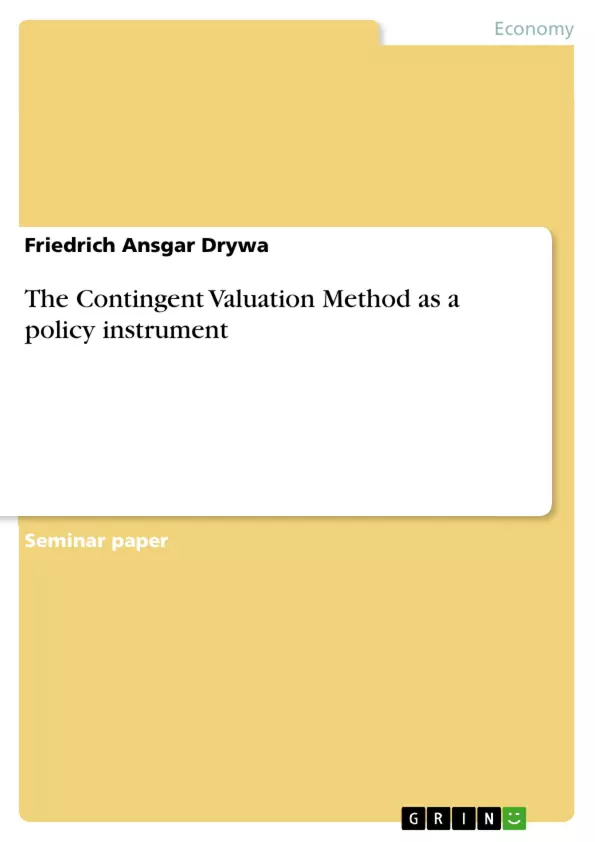When David Throsby undertook his first application of a Contingent Valuation Method to the Arts in 1983 he did it to discuss the assumption that the arts were a case of market failure. But what makes the Arts to an example of market failure and how far could this particular method of research be used to overcome it? Throughout this essay I will shortly summarize some of those aspects of market failure that can be applied to art markets emphasising the necessity to know the collective willingness to pay and willingness to accept of all parties involved in a particular market. On that general basis I shall discuss the Contingent Valuation Method (CVM) under the perspective of its usefulness to a policy decision maker, who is trying to prevent market failure from developing into governmental failure. I will point out, that CVM can provide a collective willingness to pay or willingness to accept as one of the main indicators for a failure within markets of the Arts in general. It is understood that applying the whole theory of market failure to the arts surely would go beyond the scope of this very essay. I therefore will concentrate on those aspects of market failure theory that may show the strengths and limitations of CVM and that may have an impact on public cultural policy.
Inhaltsverzeichnis (Table of Contents)
- Introduction
- General Theory of market failure
- Asymmetric information within the Arts
- Uncertainty and Adverse selection within the Arts
- Public goods: Positive extern effects
- Welfare Economics: Why and when should the government intervene?
- The Contingent Valuation Method
- Contingent Valuation Method and "The New Political Economy"
- Literature Overview
Zielsetzung und Themenschwerpunkte (Objectives and Key Themes)
This essay explores the application of the Contingent Valuation Method (CVM) as a policy instrument to address market failure in the arts. It investigates the usefulness of CVM for policymakers attempting to prevent market failure from turning into governmental failure. The main objectives of the essay are to: * Summarize aspects of market failure theory that can be applied to art markets. * Examine the strengths and limitations of CVM in the context of market failure. * Evaluate the potential impact of CVM on public cultural policy.Zusammenfassung der Kapitel (Chapter Summaries)
Introduction
This chapter introduces the concept of market failure and its application to the arts. The essay highlights the importance of understanding the collective willingness to pay and willingness to accept in order to intervene in a market where conditions leading to an optimum optimorum are not fulfilled.General theory of market failure
This section discusses the concept of an efficient market characterized by complete transparency, internalized external effects, and a complete competition. It explains how a lack of these conditions can lead to market failure. The chapter emphasizes the importance of knowing the willingness to pay and willingness to accept in order to intervene in failing markets.Asymmetric information within the Arts
The chapter examines the role of information in decision-making, particularly in the context of limited resources. It argues that asymmetric information, where either the supply or demand side lacks complete information, can lead to uncertainty and instability in the arts market.Schlüsselwörter (Keywords)
The main keywords and focus topics of this essay include market failure, contingent valuation method (CVM), willingness to pay, willingness to accept, asymmetric information, public goods, cultural policy, and the arts. The essay explores how CVM can be used as a policy instrument to address market failure and promote efficient allocation of resources within the arts sector.- Citar trabajo
- Friedrich Ansgar Drywa (Autor), 2008, The Contingent Valuation Method as a policy instrument, Múnich, GRIN Verlag, https://www.grin.com/document/166570



